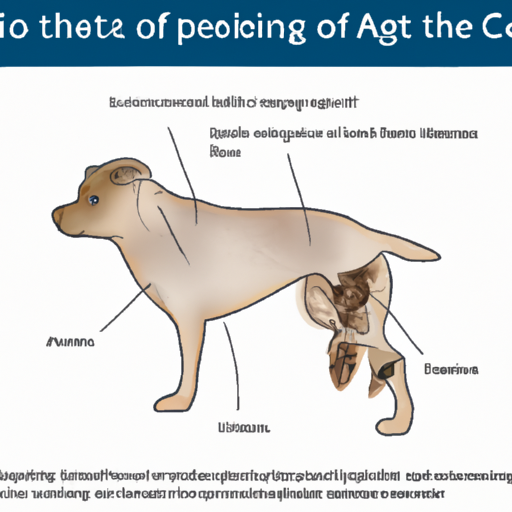Understanding Canine ACL Injuries
To understand how a dog can tear their Anterior Cruciate Ligament (ACL), first, you need to grasp the anatomy of a dog’s knee. Like in humans, the ACL in dogs is a crucial ligament that stabilizes the knee joint. It connects the femur (thigh bone) to the tibia (shin bone), preventing the tibia from shifting forward under the femur.
Dogs can tear their ACL in a variety of ways, but the most common are through sudden trauma or gradual wear and tear. Let’s delve deeper into these causes.
Traumatic Injuries Leading to ACL Tears
Trauma-induced ACL tears are often the result of a single, high-intensity incident. This could be any situation where your dog’s knee experiences a sudden, harsh twist or turn while bearing weight.
Typical scenarios include:
- Chasing a ball or squirrel and making a sharp turn.
- Slipping on an icy surface.
- Jumping off a high place and landing awkwardly.
Secondly, overweight dogs are at a higher risk of traumatic ACL tears. The additional weight puts extra strain on the ligaments, making them more susceptible to injury.
Gradual Wear and Tear
On the other hand, ACL tears can also occur gradually over time due to repetitive strain or aging. This is more common in older dogs and larger breeds, whose joints endure more pressure throughout their lifetimes.
Factors contributing to wear and tear include:
- Regular intense exercise, such as long-distance running or agility training.
- Obesity, which puts constant strain on the joints.
- Genetic predisposition in some breeds like Labrador Retrievers and Rottweilers.
Recognizing the Signs of an ACL Tear
The signs of an ACL tear in your dog can vary depending on the severity of the injury. Some common symptoms to watch out for include:
- Limping or lameness in the affected leg.
- Difficulty standing up or sitting down.
- Swelling around the knee joint.
- Decreased activity levels or reluctance to play.
Remember, your pet relies on you to notice when something is wrong. If you notice any of these signs, it’s vital to consult with a veterinarian as soon as possible.
Preventing ACL Tears in Dogs
While some ACL tears are unavoidable, there are steps you can take to reduce the risk:
- Maintain a healthy weight for your dog.
- Avoid activities that involve sudden turns or jumps.
- Provide regular, but moderate, exercise.
- Consider joint supplements for older dogs or breeds prone to joint issues.
Frequently Asked Questions
Q: Can a dog walk with a torn ACL?
A: Yes, some dogs can still walk with a torn ACL, but they may limp or show signs of discomfort.
Q: Can an ACL tear heal on its own?
A: No, an ACL tear will not heal without treatment, which may include surgery and/or physiotherapy.
Q: What happens if an ACL tear is left untreated?
A: If left untreated, an ACL tear can lead to chronic pain, arthritis, and potentially, permanent lameness.
Q: How is an ACL tear diagnosed in dogs?
A: A veterinarian will typically diagnose an ACL tear through a combination of a physical exam, X-rays, and sometimes, an MRI.
Q: Can all breeds of dogs get an ACL tear?
A: Yes, all breeds can potentially suffer an ACL tear, but larger breeds and overweight dogs are at a higher risk.



